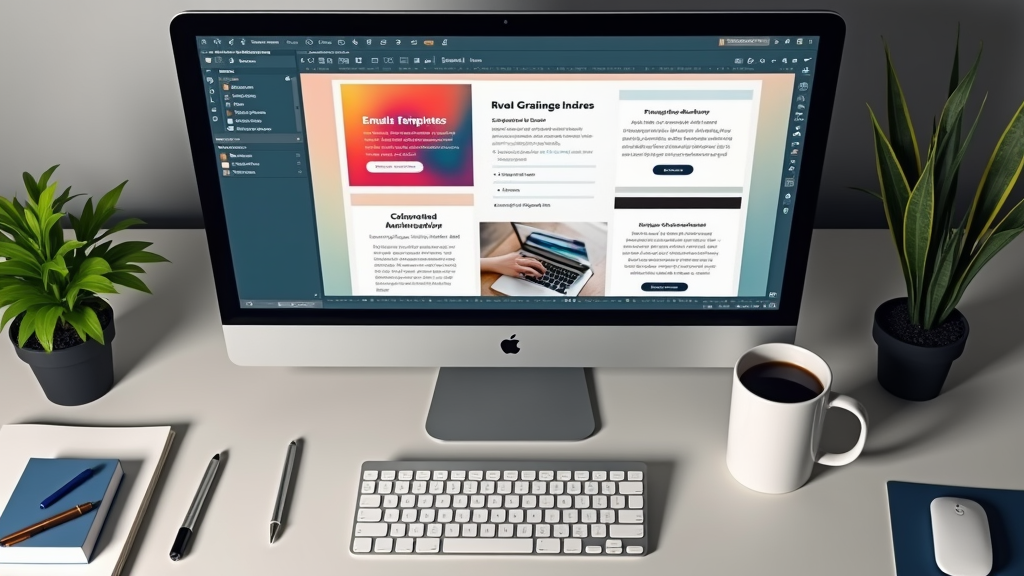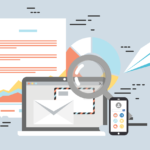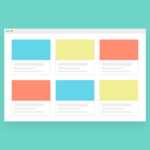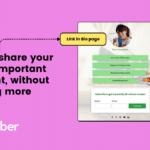Most affiliate marketers know that an effective email campaign can be a real game-changer. I’ve spent years checking out every angle of affiliate marketing, and one area I’ve come to value truly is a well-crafted email template. Whether you’re new to affiliate marketing or a seasoned pro looking to DIY some fresh ideas, a solid template can help you promote products and services without sounding too pushy.
There are loads of DIY strategies out there. But what makes a DIY affiliate marketing email template so popular is its balance of structure and flexibility. By setting up the right system, you can quickly adjust your campaigns to match your audience’s needs and trends, all while keeping the process both creative and manageable.
In this guide, I’ll share my approach to building DIY email templates that work. This is not merely focused on the technical setup. It is essentially about understanding what connects with your subscribers. Once you figure out what grabs their attention, you can build emails that engage and convert. Read on to learn how to design, test, and improve your email templates so they fit your affiliate marketing goals perfectly.
Step 1: Understand Your Audience and Goals

Before you open your design tool, you need to have clarity about who you’re writing to and what you want to achieve. A template that works for one niche might not work for another because the audience’s needs and expectations differ greatly. I always start by asking some strategic questions about my target group and campaign objectives.
Questions to Consider:
- Who are my subscribers and what kind of content resonates with them?
- What products am I promoting, and what must the emails accomplish?
- What tone should I use: friendly and casual or more professional?
- Do I want the template to be visually engaging, text-focused, or a mix of both?
Example Goals for Your Email Campaigns:
- Increase click-through rates on affiliate offers.
- Improve brand trust by providing value in every email.
- Create a connection with readers through personalized content.
- Boost sales by using a persuasive yet genuine tone.
- Streamline the email creation process so you can focus on content quality.
Taking the time to define these aspects upfront helps shape every element of your email template. I like to keep a list of these questions handy so that as trends change, I can adapt my strategy accordingly. Over the years, I have refined my approach by gathering insights from surveys, feedback forms, and direct conversations with subscribers. This introspection not only drives my messaging but also underpins the success behind every campaign.
It is also very important to explore the detailed demographics of your audience. Consider what their daily challenges are, what solutions they seek, and how your affiliate offerings align with those needs. In many cases, segmenting your list based on behavior or interests enables you to tailor the content even further. By doing so, you transform a generic email blast into a personalized conversation that truly resonates with each individual reader.
Moreover, think about the different stages your subscribers are in their buying cycle. For someone new to your niche, a friendly introduction and useful resources are ideal. For more experienced subscribers, you may want to include advanced insights or special offers that acknowledge their loyalty. This level of detail ensures your emails are not merely informative but also deeply connected to your audience’s evolving needs and expectations. Spending time to truly understand your audience is, without doubt, one of the most critical foundations of your email marketing strategy.
Step 2: Choose a Suitable Email Platform and Template Style
Once your audience and goals are clear, the next step is to pick the right platform and decide on the style of your email template. There are a lot of email service providers available, and each comes with its own set of features. You might be using platforms like Mailchimp, Sendinblue, or ConvertKit, which offer a good mix of flexibility and ease of use.

How to Decide on a Platform:
- Determine your budget and the volume of emails you plan to send.
- Look for a platform that supports automation and personalization.
- Consider templates that come with responsive designs, ensuring good display on mobile devices.
- Evaluate interface simplicity; you want to spend less time fiddling with settings and more time on creative content.
Template Styles to Consider:
- Clean and Minimal: Great for focusing on content without overwhelming the reader.
- Visual-Heavy: Works well if your affiliate products benefit from showcasing images and multimedia.
- Editorial Look: Emphasizes storytelling and can create a personal connection with your audience.
- Interactive: Allows for dynamic elements like surveys or product carousels, engaging the subscriber through action.
The platform you choose will come with built-in template options that you can customize. I usually start with a basic layout and then gradually add my unique touches – the right mix of colors, fonts, and a tone that reflects my brand identity. The strategy here is to ensure that the template not only looks modern and next-level cool but also functions seamlessly across devices.
After selecting the platform, it is important to experiment with different classic and innovative template styles. I often set aside time to test out new formats and design trends that are emerging in the market. This continuous tweaking process is what keeps my email campaigns relevant and engaging. In addition, paying attention to the backend features such as analytics and A/B testing capabilities helps ensure that every design decision is supported by solid data.
Another critical point to consider is the scalability of your chosen email solution. As your subscriber list grows, you need a platform that can handle increasing volumes without compromising performance. A good rule of thumb is to check whether the platform offers seamless integrations with other marketing tools, ensuring that your entire ecosystem works together smoothly. The interplay between design and functionality ultimately drives the success of your overall campaign.
Step 3: Craft Email Copy That Resonates
The heart of any effective email campaign is compelling content. DIY email templates give you the freedom to experiment with different copy styles until you find what truly clicks with your audience. The key is to remain authentic and offer something of value in every email you send.
Writing Tips for Affiliate Email Copy:
- Use a conversational tone: Write as if you’re having a one-on-one chat with a friend.
- Focus on benefits rather than features: Explain clearly what the reader gains.
- Include personal insights or stories where appropriate: This builds trust and relatability.
- Keep language clear and simple: Avoid jargon that might confuse or alienate your readers.
Template Sections to Include:
- Opening Greeting: Start with a warm welcome or an intriguing hook.
- Main Content Body: This section should educate or offer value, such as tips related to a product’s benefits.
- Personal Touch or Story: Reference a successful case study or a personal testimonial to add credibility.
- Clear Call to Action: Direct the reader to a clear next step, for example, clicking a link or checking out a product page.
- Closing and Signature: End with a message that invites further engagement, like replying with questions or feedback.
When I design these sections, I try to remember that each part of the email plays a critical role. The opening needs to capture attention, and the body must deliver value in a digestible format. Even the call to action should feel like a natural progression rather than a hard sell.
To add more depth to your email copy, consider supplementing your key sections with additional context. For instance, in your opening, you might include a brief anecdote that sets the stage for the information to follow. In the body, break down complex ideas into smaller, bite-sized pieces that maintain clarity and keep your readers interested. Such strategies not only make your emails more engaging but also help solidify your authority in the niche.
Adding variation in sentence structures and experimenting with different storytelling techniques makes your emails stand out. I’ve found that mixing in humor, surprising facts, or relatable personal experiences can transform a bland message into one that really connects with the audience. Each email becomes not just a marketing tool, but a small conversation that builds trust and credibility over time.

Step 4: Optimize Email Design and Structure
A well-organized template enhances readability and increases engagement. The layout should guide the reader through the email seamlessly, making it easier to digest the content and take action. I focus on creating a balance between visuals and text that suits both quick skim readers and those who jump into every word.
Key Design Considerations:
- Responsive Design: Ensure the layout works well on mobile devices as most readers check emails on their phones.
- White Space: Use white space to prevent the email from looking cluttered. This makes every piece of information stand out.
- Typography: Choose fonts that are easy to read. Stick with standard fonts or use web-safe alternatives to avoid display issues.
- Color & Branding: Align the color scheme with your brand to create a consistent look and feel.
- Visual Hierarchy: Create a clear path for the reader, ensuring that headings, subheadings, and key points are visually distinct.
In one of my campaigns, I experimented with a split-image layout that placed a product image on one side and a personal testimonial on the other. It was a refreshing twist on a standard template, and my engagement rates went up noticeably. Smaller visual elements, such as bullet icons or separators, can make a big difference in guiding the reader’s eye.
Beyond basic layout concerns, think about the subtle design touches that can make a difference. For example, using contrasting colors for calls to action or ensuring that important details are highlighted through thoughtful use of spacing and font weights can really step up your email design. Spend some time testing different layouts with your audience to learn what keeps them reading and clicking through.
Furthermore, consider the role of imagery and graphics. A well-chosen image can break up blocks of text and provide visual cues that highlight key points. Be sure to test how different devices render your designs. Even the smallest adjustments—in padding, border choices, or background color—can affect readability and user engagement. Over time, these refinements will accumulate, resulting in a highly optimized template that works effectively across multiple platforms and for varied audience segments.
Step 5: Test, Tweak, and Analyze Performance
The process of building an email template doesn’t end once you’ve hit the send button. I believe that testing and tweaking are integral parts of creating an effective affiliate marketing email template. Data and feedback drive improvement, so don’t shy away from experimenting with different elements.
Ways to Optimize Performance:
- Run A/B tests on subject lines, copy, and design elements to see what performs best.
- Monitor key metrics like open rate, click-through rate, and conversion rate.
- Collect feedback from your subscribers through surveys or direct responses.
Practical Testing Tips:
- Start with small changes: Tweak one element at a time to isolate what’s affecting performance.
- Use heat maps to understand where readers are focusing their attention.
- Experiment with email scheduling to see if different times yield better results.
- Keep a log of each test’s results so you can refer to what worked well in the past.
Testing isn’t just a one-off task—it’s an ongoing commitment to improvement. I regularly schedule time to analyze the performance of each campaign, documenting trends from month to month. This constant re-evaluation lets me spot subtleties, whether it’s a slight dip in click rates or a surge in engagement after a change in tone.
One effective tactic has been to segment my audience for testing, ensuring that I gather a broad spectrum of data from different demographic groups. By doing so, I can refine my messaging and design elements in a way that speaks to various groups specifically. The key is to maintain a scientific approach to email marketing: form hypotheses, run controlled tests, and use the results to make informed decisions. With every test, you not only gain insights into your audience but also build a valuable repository of data that can guide future campaigns.
Step 6: Automate and Streamline Your Process
Automation is a fantastic way to maintain consistency without extra effort. Creating DIY affiliate marketing email templates that can be easily replicated saves time and reduces the chance of errors. I’ve found that integrating automation tools transforms the whole workflow and helps maintain focus on strategy over minutiae.
Automation Strategies to Consider:
- Set up autoresponders for welcome emails. This creates an immediate connection with new subscribers.
- Use email sequences that gradually offer more value and gently promote offers without overwhelming your audience.
- Integrate your email platform with other marketing tools to share data and insights smoothly.
- Create dynamic templates that automatically pull in personalized details like the subscriber’s name or previous purchase information.
Simplifying repetitive tasks lets you spend more time refining your overall strategy. In one of my recent projects, I used an automation tool that segmented my audience based on their behavior. The result was a tailored email series that resonated better with each group, resulting in higher conversion rates. By automating the mundane aspects of email creation and delivery, you allow yourself the luxury of focusing on strategic improvements and creative concepts.
It is also very important to continually review your automated processes. Technology evolves rapidly, and staying updated with new features or enhancements in your chosen platform can offer unexpected advantages. Regularly checking in on performance metrics and being open to tweaking your workflows means you’re always operating at peak efficiency. Automation, when implemented thoughtfully, can be the backbone of a highly effective email marketing strategy.
Step 7: Stay Consistent and Update Your Strategy
Even the best email template won’t remain effective if it’s not updated. The digital space changes quickly, and your emails need to evolve with your audience and market trends. Staying consistent with your output while also keeping an eye on fresh trends is an ongoing challenge, but one that pays off.
Maintaining Consistency:
- Set a regular schedule to review your email performance and update templates as needed.
- Keep track of industry trends and periodically refresh design elements to stay modern.
- Stick with a core template that aligns with your brand, but don’t be afraid to experiment with slight modifications.
Adaptation Techniques:
- Review subscriber feedback and analytics regularly to understand what’s working and what isn’t.
- Create backup versions of your most effective templates to ensure easy replication.
- Focus on gradual improvements rather than completely overhauling your strategy all at once.
This part of the process is all about ensuring long-term success. For years, I have discovered that the ability to adapt is the cornerstone of sustainable email marketing. An effective strategy today might need to be revisited tomorrow, and each update is an opportunity to better align with your ever-changing audience. It’s important to strike a balance between consistency and innovation. While your core message and voice should remain steady, allowing for small modifications ensures that your emails never feel outdated.
Consider implementing regular brainstorming sessions and review meetings, where you critically discuss past campaigns and outline potential tweaks for the future. This proactive approach not only smooths the path for continuous improvement but also keeps your creative energies high. Ultimately, adapting your strategy should feel like a natural progression rather than a forced overhaul, blending what works with new ideas seamlessly over time.
Common Questions & Troubleshooting
What if my email template isn’t performing as I expected?
If you’re not seeing the results you hoped for, try breaking down the email into smaller pieces to see which part might be causing a bottleneck. Is the subject line strong enough? Is the call to action clear and compelling? Experimenting with A/B tests on various elements can help isolate the issue. Sometimes, a small tweak such as a color change or altering the copy can bring significant improvements.
How do I ensure my emails don’t end up in the spam folder?
- Use reputable email platforms that follow best practices.
- Avoid using trigger words that could be flagged by spam filters.
- Ensure that your email list is clean and consists of subscribers who have opted in.
- Include an easy-to-find unsubscribe link to maintain transparency with your readers.
What are some troubleshooting steps for formatting issues?
If your template doesn’t display correctly on all devices, consider a responsive design and test it across multiple platforms. Simplify your CSS and remove any complex elements that might not render well on mobile devices. Sometimes, small adjustments can greatly improve the visual consistency of your emails.
It’s always a good idea to set aside time periodically to review feedback and technical data. Adjustments based on data-driven insights often lead to a more user-friendly experience. In addition, keeping up with the latest trends in coding practices and design standards will help mitigate any potential issues before they become critical.

Final Thoughts & Next Steps
A DIY affiliate marketing email template isn’t just about code and design; it is a strategic tool that helps forge genuine connections with your subscribers. With a clear understanding of your audience, the right platform, compelling copy, smart design, thorough testing, and thoughtful automation, you can build a system that drives engagement and conversions.
Your Action Plan:
- Begin by defining your audience and email campaign goals in detail. Spend time getting to know the challenges and desires of your readers. This step lays the groundwork for everything that follows.
- Select an email platform that fits your budget and technical needs, and experiment with different template styles until you find something that fits seamlessly with your brand message.
- Draft your email copy focusing on authenticity, benefits, and clear calls to action. Use personal anecdotes and relatable stories to make your message stick.
- Design a clean, responsive, and engaging layout that guides your readers naturally through your message. Consider how every element on the page—from fonts to images—works together to support your goals.
- Test various elements of your email, gather performance data, and adjust as necessary. Tracking each change will help you understand what small shifts can have a big impact.
- Implement automation to streamline sending and ensure consistency across your campaigns. Automation not only saves time but also allows you to focus on refining campaign strategy and creative messaging.
- Periodically review your strategy and update your template to keep up with industry trends and audience preferences. Regular updates help prevent stagnation and keep your emails fresh and engaging.
This all-in-one process allows you to create emails that not only look good but also perform exceptionally well. By continuously adjusting and rethinking every aspect of your strategy, you build a living, breathing communication channel that grows along with your business.
Take a moment to reflect on your current email practices. What small change can you implement in your next campaign? Perhaps it’s a reworked call to action, a fresh design element, or a new automated sequence. Each experiment is an opportunity to learn, improve, and ultimately drive better results.
Remember, email marketing is as much an art as it is a science. The joy of creating something that not only reaches inboxes but also resonates on a human level is invaluable. Your next campaign could be the one that fires up your community, sparks conversations, and drives incredible results for your affiliate marketing efforts.
Think about your next email campaign. What’s one change or improvement you’ll experiment with? Sharing ideas and experiences can benefit not only your strategy but also help others in our affiliate marketing community. The small steps you take today can set the stage for massive growth tomorrow. Bottom line, consistent effort and smart tweaks will always pay off in the long run.
Thank you for taking the time to read this guide. I hope it has given you plenty of actionable insights and has inspired you to take a more detailed, data-driven approach to your DIY email marketing strategy. Now, it’s time to put these strategies into action and see the results for yourself. Happy emailing!
In the ever-evolving world of affiliate marketing, staying ahead of the curve is very important. As trends change and digital landscapes shift, it becomes increasingly necessary to regularly revisit your strategies. The journey of refining your email templates is an adventure filled with ongoing learning, data analysis, and creative brainstorming. Every campaign provides new insights, and every modification opens up further opportunities for excellence.
Consider dedicating time each month to a deep review of your most recent campaigns. Sit down with a notebook or your favorite digital tool and list out what worked, what didn’t, and ideas for future tests. Over time, these small sessions add up to a treasure trove of insights that can shape your overall approach. By documenting the evolution of your campaigns, you are not only tracking progress but also building a personalized roadmap for future success.
Moreover, collaborating with other affiliate marketers, or even engaging in online communities, can provide you with a fresh perspective. Hearing how others tackle similar challenges can ignite new ideas that you can incorporate into your templates. Never underestimate the value of peer review and shared expertise; sometimes, a simple conversation can lead to a breakthrough.
The digital marketing landscape is dynamic, and techniques that were effective last year may need adjustment today. This is why flexibility is key. As you experiment and grow, don’t be afraid to mix in a variety of approaches. Try out different subject lines, rearrange content sections, or even test entirely new formats. Balancing creativity with rigorous testing will ensure your emails remain engaging and effective over time.
Ultimately, the success of your email marketing efforts relies on your willingness to adapt, learn, and continuously fine-tune your approach. In this light, every aspect of your campaign—from audience analysis to the final call to action—deserves careful consideration. Whether you are adjusting the tone of your copy, refining the aesthetics of your design, or reconfiguring the timing of your sends, each change contributes to a richer, more effective overall campaign.
With persistence and a mindset geared toward continuous improvement, your DIY email marketing templates can become one of the most powerful tools in your affiliate marketing arsenal. So, take these insights, mix them with your style, and let your creativity flow. The road to email marketing mastery is paved with experimentation, data, and a relentless drive to get better every day.







Crafting effective affiliate marketing emails can be a challenge, especially when trying to strike the right balance between persuasion and authenticity. Having well-structured templates can save time while ensuring consistency in messaging. However, customization is key – generic emails often fail to engage readers. A strong subject line, a clear value proposition, and a compelling call to action can make all the difference in conversions. Personalization, even in template-based emails, can significantly boost engagement and trust. It’s always interesting to see how small tweaks, like adjusting tone or adding a personal anecdote, can impact open and click-through rates.
Some great take-away points there, for me the big message here is optimize the value you add through email communications.
This was a really insightful breakdown of DIY email marketing templates! As someone who’s considering email marketing for my affiliate website, I found steps 1-3 especially helpful. Understanding the audience and goals first makes so much sense—it’s easy to jump straight into writing emails without fully thinking through who you’re speaking to and what they need. Do you have a specific process or tool you use to gather audience insights, like surveys or analytics from past emails?
I also appreciate the emphasis on choosing the right platform and template style. With so many options out there, it’s great to have a structured approach to narrowing them down. Have you found a particular email platform that works best for affiliate marketing, especially in terms of automation and ease of use?
The copywriting section really stood out to me, too. Writing in a conversational tone while keeping the focus on benefits rather than features is something I’ll definitely keep in mind. I can see how storytelling and personal insights would make emails more engaging rather than feeling like a sales pitch. Looking forward to putting these strategies into action—thanks for sharing such a thorough guide!
I use Send Steed which you get free with membership at LeadsLeap. You can check it out here.
Having solid email templates for affiliate marketing is a game-changer. A well-crafted email can make the difference between a click and a sale. Personalization is key—I’ve noticed that emails that feel more conversational tend to get better engagement. Do you think short, to-the-point emails work better, or do longer ones with more storytelling perform best? It’d be interesting to test different styles and see what converts best.
The big thing that sets affiliates apart in terms of success is the emotion factor. If you use email to build a relationship, add additional value, and grow trust you will be a success if you just send ads you lose and so does your subscriber.